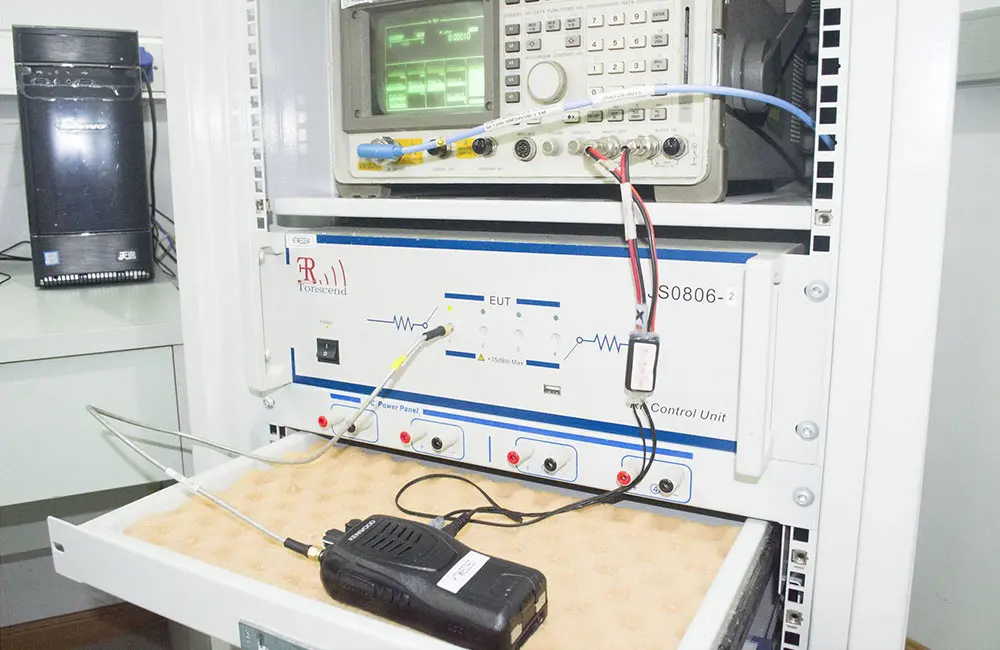
Robotic Vacuum Cleaner EU Certification Testing
Destination:
EU - Europe
Products Involved:
Vacuum Cleaner
1) Vacuum Cleaner
Standards:
Household Use
- IEC 60335-2-2:2019
- EN 60335-2-2:2010 +A11:2012 +A1:2013
- IEC 60335-1:2010+A1:2013+A2:2016
- EN 60335-1:2012+A11:2014+A13:2017+A1:2019 +A14:2019+A2:2019+A15:2021

Commercial Use
- IEC 60335-2-72: 2021
- EN 60335-2-72: 2012
- IEC 63327:2021
- EN IEC 63327:2021
2) Dust Collector
Standards:
- IEC 60335-2-2:2019
- EN 60335-2-2:2010 +A11:2012 +A1:2013
- IEC 60335-2-29:2016+AMD1:2019
- EN 60335-2-29:2021+A1:2021
- J60335-1(H27)
- J60335-2-2(2022)
- J60335-2-29(2019)
3) Handheld Vacuum Cleaner
Standards:
- IEC 60335-2-2:2019
- IEC 60335-2-10:2002+A1:2008
- EN 60335-2-2:2010 +A11:2012 +A1:2013
- EN 60335-2-10:2003+A1:2008
Special Requirements for Vacuum Cleaners
- IEC 60312:2000, IEC 60312:2007, IEC 60312-1:2010+A1:2011, IEC 60312-2:2010
- IEC 62885-2:2016: Performance testing methods for household dry vacuum cleaners (dust removal efficiency in multiple scenarios, filtration efficiency, dust re-emission, movement resistance, impact resistance of detachable cleaning heads, operating radius, hose and connection tube deformation, impact test, hose twisting and repeated bending, grip force, noise level, energy consumption, motor lifespan, etc.)
- (EU) No 665/2013 and (EU) No 666/2013: Directives on vacuum cleaner energy requirements and labeling
- IEC 62929:2014: Performance of household dry cleaning robots (dust removal ability, autonomous navigation, coverage test, average speed, user manual)
- IEC 60704-2-1:2000 and ABNT NBR 13910-1:1997: Noise testing (Noise Seal)
Testing Information
1) Robotic Vacuum Cleaner
Key Points
- Battery
- Fire Protection
- Software Evaluation
- Mechanical Hazards
1.1) Battery
1.1.1) Certification Requirements
- Battery Cell & Battery Pack
- IEC 62133-1: Nickel-metal hydride (NiMH) battery
- IEC 62133-2: Lithium-ion (Li-ion) battery
1.1.2) Structural Requirements
- Temperature protection: NTC
- Current protection: Charge cutoff
- Voltage protection: Balanced charging
1.1.3) Testing Requirements
- 24-hour charging
- 168-hour overcharging
- Terminal short circuit
- IEC 60335-1:2020 (battery discharge, charging, battery system operation, etc.)
1.2) Fire Protection
- Battery terminals
- Motor carbon brush holder
- Support for charging terminal holder
- DC inlet
1.3) Software Evaluation
- Motor overload protection
- 1s pickup protection (when the device is lifted, hazardous moving parts should stop within 1 second)
- Cliff detection (detects edges to prevent falling)
- Obstacle avoidance (should stop or reroute when encountering an obstacle)
- Low voltage protection (stops operation or returns to charging before safety-critical features fail due to low power)
1.4) Mechanical Hazards
- Automatic cleaning robots must have:
- A device that stops movement within 1 second when losing contact with the cleaning surface
- Fall protection (detecting edges such as stairs and stopping or reversing direction)
- Electronic circuit fault testing
2) Dust Collector
Key Points
- Electric shock protection (built-in power board)
- Fire Protection
- Structural Integrity
2.1) Electric Shock Protection
2.1.1) Built-in Power Board
- Safety Extra Low Voltage (SELV): ≤42.4V
- Class II products or Class II structure: Only reinforced or double insulation should be accessible
- Internal wiring: Must meet triple insulation requirements between primary and secondary
2.1.2) Transformer
- PCB primary-to-secondary isolation
- Transformer primary-to-secondary isolation (primary pin to secondary pin, primary coil to secondary coil, etc.)
2.1.3) Plug Discharge Test
- Capacitors <0.1uF are not considered hazardous for electric shock
- 1s after power is cut off, plug voltage should not exceed 34V
2.1.4) Y Capacitor
- Protective impedance should consist of at least two separate components
2.2) Structure
- Recommended protection class: Class I
- Insulation requirements:
- Class II products: Basic insulation creepage distance ≥ 4.0mm
- Class I products: Basic insulation creepage distance ≥ 2.0mm
3) Handheld Vacuum Cleaner
Key Points
- UV Lamp Protection
- Stability
3.1) UV Lamp Protection
- Electronic safety switch
- UV leakage prevention
- Sterilization rate testing
3.2) Stability
- Base stability
- Hook durability
Common Issues
- IPX4 Testing Requirements:
- Products with water suction functionality must meet IPX4 testing
- Vacuum cleaners for animal grooming and water-suction cleaning must be at least IPX4
- Battery Terminal Protection:
- Use fiberglass sleeves
- Ensure fire-resistant battery compartment
- Maintain adequate spacing between battery terminals and surrounding materials
- If battery terminals are on PCB, ensure at least 3mm clearance from plastic materials
This organized document provides a clear and structured summary of EU certification testing requirements for robotic vacuum cleaners. Let me know if you need any modifications!
Email:hello@jjrlab.com
Write your message here and send it to us
 Toothbrush FDA Certification Testing
Toothbrush FDA Certification Testing
 Snoring Device FDA 510k Standard Testing
Snoring Device FDA 510k Standard Testing
 Single Use Intravenous Catheter Certification Test
Single Use Intravenous Catheter Certification Test
 Silicone Material Product Compliance Certification
Silicone Material Product Compliance Certification
 What to Do If Cytotoxicity Test Results Are Positi
What to Do If Cytotoxicity Test Results Are Positi
 ISO 10993:5 Cytotoxicity Testing Methods
ISO 10993:5 Cytotoxicity Testing Methods
 FDA ISO 10993-1 Biocompatibility Evaluation Guidel
FDA ISO 10993-1 Biocompatibility Evaluation Guidel
 In Vitro Cytotoxicity Testing for Medical Devices
In Vitro Cytotoxicity Testing for Medical Devices
Leave us a message
24-hour online customer service at any time to respond, so that you worry!




